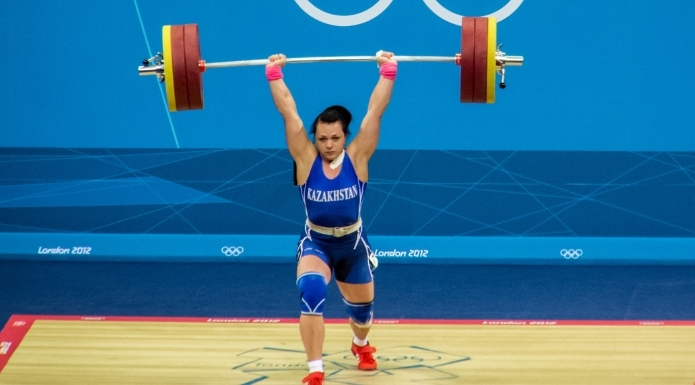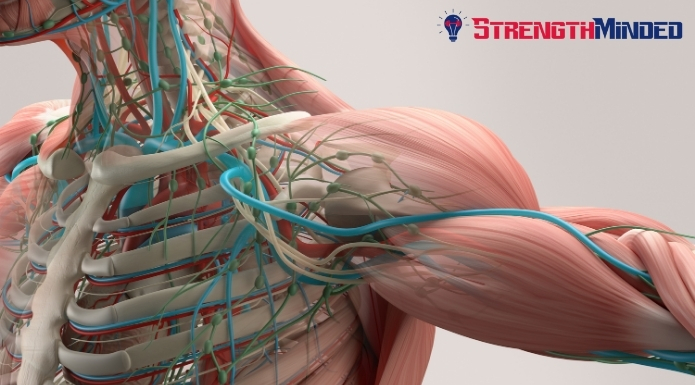The benefits of the cable pull-through, sometimes called ‘hip pulls’, are many. One of the exercise’s main advantages is that it allows one to train the posterior chain, the glutes, hamstrings and hip adductors without the lower back having to support a big external load. This is one of the main advantages the cable pull through versus deadlifts.
Taking the load off the back is great if you have a lumbar injury and also makes pull-throughs a good teaching tool. You are able to focus on hip drive and not get the hips mixed up with the lower back which is a very common problem. Many beginning trainees have a very difficult time disassociating the lumbar from the hips. This is of primary importance. If you can’t tell whether a movement is initiated from the lumbar rather than the hips you will never learn proper hip drive. Hip drive is the foundation of most of our full body strength training movements. There may not be another “glute” movement as good as a pull-through and its value in teaching hip drive is unparalleled. Romanian deadlifts are good for this purpose but they don’t have the advantage of removing the load from the back.
Pull-throughs being more a hip “isolator” makes them valuable as a secondary or finishing movement. A scenario that would make Romanian deadlifts unproductive could be a perfect fit for the cable hip pull through. Low back fatigue is not as much a factor so the hips can be worked harder and longer.
However, as one maintains a good arched lumbar throughout the movement, local muscular endurance of the lower back is also trained.
Cable Pull-Through vs Deadlift
The pull-through is complementary to the deadlift. It resembles a deadlift enough that it is sometimes mistakenly called a cable deadlift. While it is not a true deadlift, it is a very good exercise in its own right for those who do not want to deadlift.
If you do not want to deadlift but would like some of the benefits, the pull-through will do you right. As a supplemental exercise for ALL lifters, if you haven’t included this movement in your training regimen yet then start giving it some time now.
Yes, it looks funny to some people since you have to reach between your legs and then pull a cable handle up toward your groin. It certainly does not look at strange as hip thrusts done with a barbell and, quite frankly, it is a far superior exercise!
Equipment Needed for Pull-Through
Pull-throughs are done with a cable pulley apparatus with the cable set in the bottom position, such as you would use to do a low pulley row.
There are many affordable cable machines for home use. Although some are fancier than others, with more cable positions which allow for more exercises, even the most basic ones will allow you to do pull-throughs along with lat-pulldowns, low cable rows, etc. You can use these home machines extensively without having to purchase an expensive ‘home-gym’ cable setup. A simple unit like the XtremepowerUS LAT Machine sells for well under 200 dollars, while the Valor unit below, with more attachments and options, for goes for under $300.
A rope handle (sometimes called a triceps rope) is usually used. However, a double-handled v-bar, like this Double-D Row Handle may suffice for some trainees, or even a V-handle. I (Eric) actually prefer a double handle but most trainees seem to prefer the rope.
Pull-through Setup
1. With the cable handle end lying on the floor back up to it so that you can reach down between your legs and grasp it.
2. Walk out several paces until the slack is taken up on the cable and the weight is beginning to pull you back.
3. Take a wide enough stance to allow free movement (slightly wider than shoulder width or more). Set the shoulders back and the chest out.
Pull-through Execution:
1. Keep the chest high, the lumbar neutral (in its natural arch) and allow the weight to pull you back so that your hips come back. Allow the knees to bend slightly to about 20 to 30 degrees. Don’t think of going down but rather going back. Keep your hands in the same position. They are just there to hold onto the cable.
2. Stop when you reach your end range of motion. This is the point where you can travel back no further without your lumbar (and thoracic) beginning to round.
3. Return to the starting position by a powerful hip extension only. You should feel the contraction mainly in your glutes and second in your hamstrings. Remember that the hips do all the work. The hand do nothing but hold on.
4. Come all the way back up to the starting position and squeeze the glutes to ensure full lockout.
The following video is Craig Ballantyne performing the pull-through:





